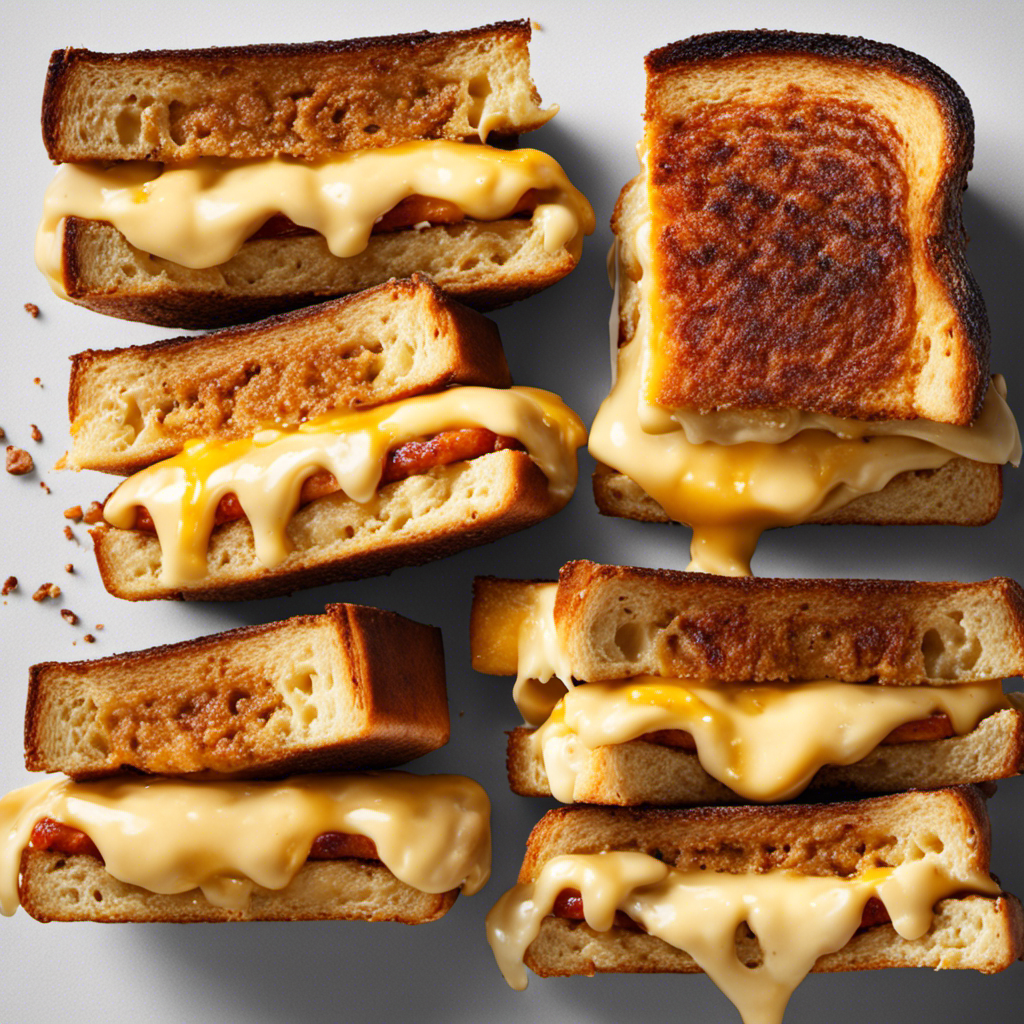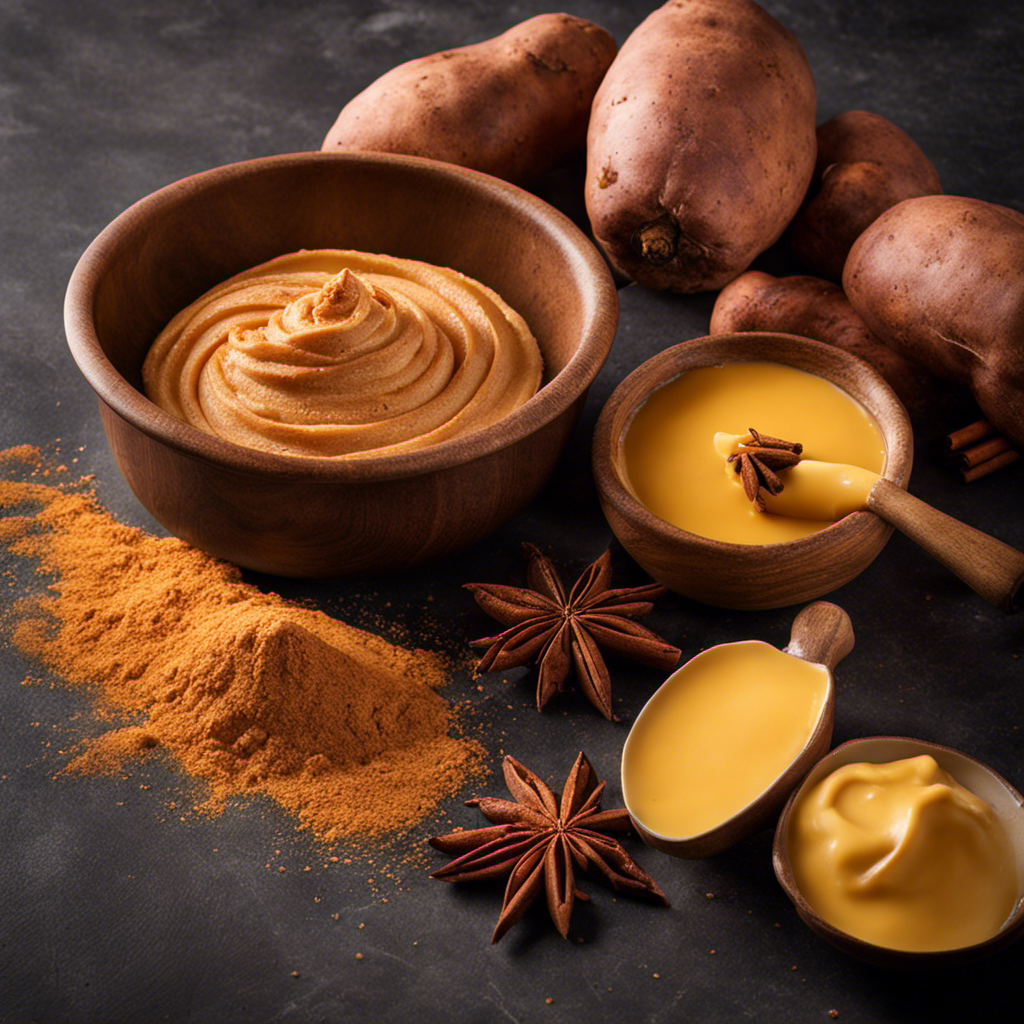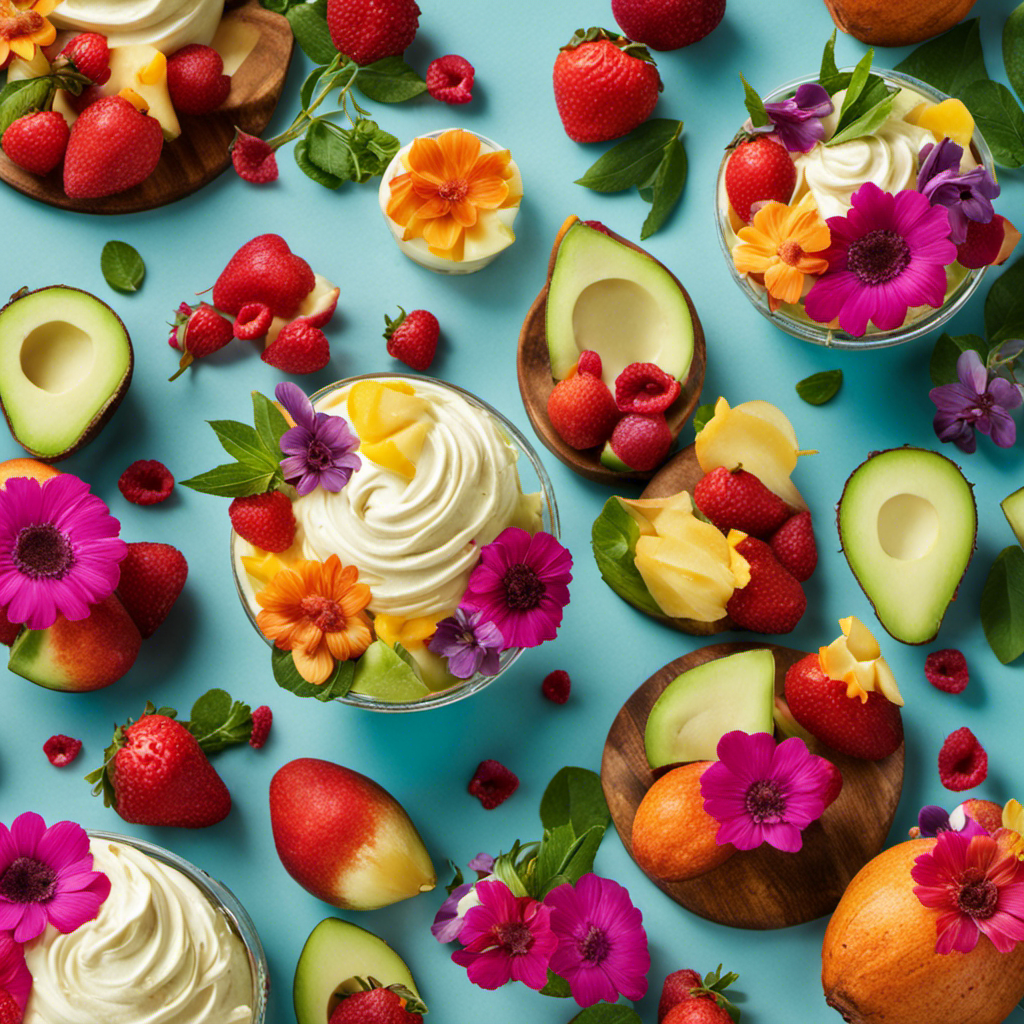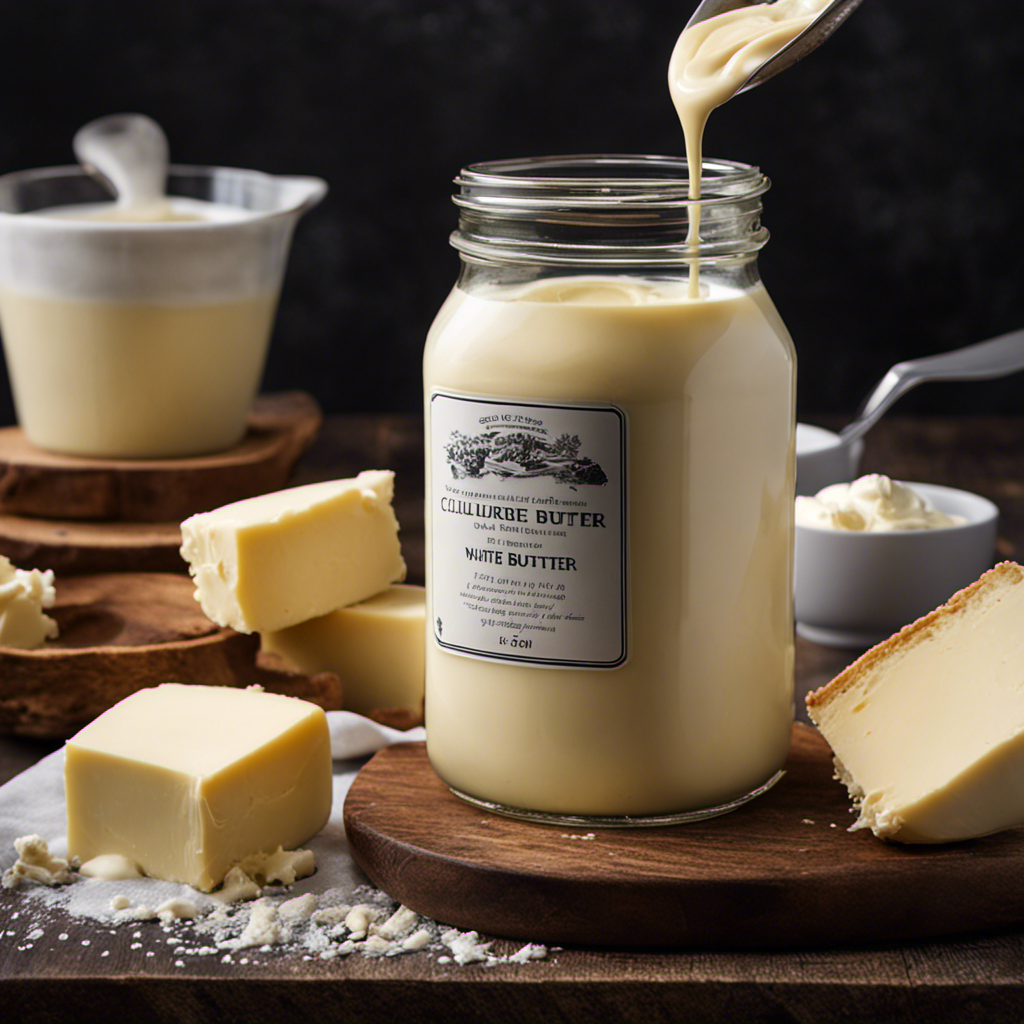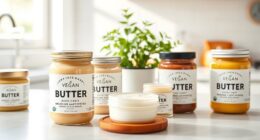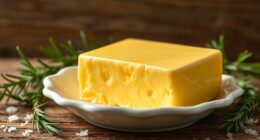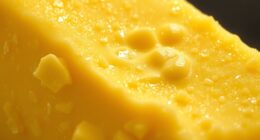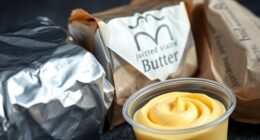I’m going to share a secret with you: creating your own almond butter in a Vitamix will change the game. Believe me, once you give it a try, you won’t want to go back to store-bought.
In this article, I’m gonna walk you through the steps of creating creamy, homemade almond butter that will have your taste buds doing a happy dance. From choosing the right almonds to perfectly blending them in your trusty Vitamix, I’ve got you covered.
Let’s get nutty!
Key Takeaways
- Choosing raw almonds and soaking them overnight before toasting enhances the flavor and texture of almond butter.
- Using a Vitamix blender and blending in short bursts with a liquid helps achieve a creamy consistency.
- Adding a liquid like coconut oil or almond oil not only adjusts the texture but also adds flavor to the almond butter.
- Customizing the taste and texture of almond butter is easy by experimenting with unique combinations and ingredients like cinnamon, honey, or vanilla extract.
Choosing the Right Almonds
You’ll want to make sure you’re choosing the freshest almonds for the best tasting almond butter. When it comes to choosing almond varieties, there are a few factors to consider.
First, opt for raw almonds rather than roasted ones. Roasting can alter the flavor and texture of the almond butter. Additionally, you may want to choose organic almonds to avoid any potential pesticide residues.
When it comes to health benefits, almonds are a nutritional powerhouse. They are packed with healthy fats, protein, fiber, vitamins, and minerals. Almonds have been linked to numerous health benefits, including improved heart health, weight management, and reduced risk of chronic diseases.
Preparing the Almonds
To get started, it’s important to soak the almonds overnight before blending them. Soaking almonds not only softens them but also helps in removing the skin easily. Soaking also activates enzymes that aid in digestion and nutrient absorption.
After soaking, you can choose to toast the almonds for a deeper flavor. Toasting enhances the nutty taste and adds a subtle crunch to the almond butter. To toast the almonds, simply spread them on a baking sheet and bake at 350°F for about 10-15 minutes, or until they turn golden brown. Be sure to keep an eye on them as they can quickly burn.
Once soaked and toasted, the almonds are ready to be blended into a creamy, homemade almond butter using your Vitamix blender.
Blending the Almonds
When it comes to blending almonds for almond butter, there are a few key points to consider.
First, the optimal blending time is crucial to achieve the desired creamy consistency.
Adding a liquid, such as oil or water, can help with the blending process and ensure a smoother texture.
Optimal Blending Time
Blend the almonds in the Vitamix until they reach a smooth and creamy consistency. Over blending can be a risk when making almond butter, as it can cause the mixture to become too thin or even turn into almond milk. However, blending for the right amount of time is essential to achieve the desired texture.
To avoid over blending, it is recommended to blend the almonds in short bursts, stopping to scrape down the sides of the container as needed. This way, you can ensure that the almonds are evenly blended without risking over processing them.
Making homemade almond butter in a Vitamix has several nutritional benefits. Almonds are packed with healthy fats, protein, fiber, vitamins, and minerals. They are also a good source of antioxidants and may help reduce the risk of heart disease and promote weight loss. By making your own almond butter, you have control over the ingredients, ensuring that no additional oils or sweeteners are added, making it a healthier option compared to store-bought varieties.
Now that we have achieved the perfect consistency for the almond butter, let’s move on to the next step: adding liquid for consistency.
Adding Liquid for Consistency
Once you’ve achieved the perfect consistency, it’s time to add a liquid to adjust the texture of your almond butter. Adding a liquid can help make the almond butter smoother and easier to spread. There are several options for liquids that you can use, depending on your preferences and dietary restrictions. Some popular choices include coconut oil, almond oil, and honey. These liquids not only help adjust the texture, but they also add flavor to your almond butter.
Almond butter is not only delicious, but it also has numerous nutritional benefits. It is a great source of healthy fats, protein, and fiber. It is also packed with vitamins and minerals, including vitamin E, magnesium, and calcium. Incorporating almond butter into your diet can help improve heart health, control blood sugar levels, and support weight management.
In addition to enjoying almond butter on its own, there are many different ways to incorporate it into your recipes. You can use it as a spread on toast or sandwiches, add it to smoothies for a creamy texture, or use it as a dip for fruits and vegetables. It can also be used as a substitute for peanut butter in baking recipes, adding a rich and nutty flavor.
| Liquid Options | Benefits |
|---|---|
| Coconut Oil | Adds a tropical flavor and creamy texture |
| Almond Oil | Enhances the nutty flavor of almond butter |
| Honey | Adds sweetness and helps bind the ingredients together |
Overall, adding a liquid to your almond butter can enhance its texture and flavor. Whether you choose coconut oil, almond oil, or honey, you can enjoy the nutritional benefits of this delicious spread in various recipes.
Roasting Vs. Raw Almonds
Roasting almonds before blending them into butter can enhance the flavor and create a rich, toasty taste profile. Not only does roasting bring out the natural oils in almonds, but it also adds a depth of flavor that raw almonds lack.
Here are some benefits of roasting almonds for making almond butter:
-
Enhanced flavor: Roasting almonds intensifies their natural sweetness and nuttiness, resulting in a more robust and delicious almond butter.
-
Improved texture: Roasting almonds helps break down their fibers, making it easier to achieve a smooth and creamy consistency when blending.
-
Extended shelf life: The roasting process helps remove excess moisture from the almonds, which can prolong the shelf life of your homemade almond butter.
In addition to these culinary advantages, roasting almonds also offers health benefits. Roasted almonds are easier to digest and may be more beneficial for those with sensitive digestive systems. Furthermore, roasting can increase the availability of certain nutrients, such as vitamin E and antioxidants.
Adding Optional Ingredients
When it comes to making almond butter in a Vitamix, there are several ways to enhance the flavor with optional add-ins.
From honey and cinnamon to vanilla extract and sea salt, these ingredients can take your almond butter to the next level.
Not only can you customize the taste and texture of your almond butter, but you can also get creative and experiment with unique combinations to suit your personal preferences.
Flavor-Enhancing Add-Ins
You can easily enhance the flavor of your almond butter by adding in ingredients like honey or cinnamon. These spices not only add a delicious taste to your almond butter but also provide additional health benefits.
Honey is a natural sweetener that can balance out the nutty flavor of the almonds, while cinnamon adds warmth and depth.
In addition to spices, you can also experiment with different textures by incorporating various ingredients. Try adding a handful of roasted almonds for a crunchy texture, or mix in a spoonful of coconut oil for a smoother consistency.
Lastly, don’t be afraid to get creative and experiment with other flavor combinations like vanilla extract, cocoa powder, or even a pinch of sea salt. The possibilities are endless!
Customizing Taste and Texture
Now that we’ve learned about flavor-enhancing add-ins for almond butter, let’s dive into customizing the taste and texture of our homemade spread.
One of the great aspects of making almond butter in a Vitamix is the ability to control the consistency and experiment with different variations. To customize the flavor, you can add ingredients like cinnamon, honey, or vanilla extract. These additions will give your almond butter a unique taste that suits your preferences.
If you prefer a smoother texture, you can blend the almonds for a longer period or add a bit of oil to achieve a creamier consistency. On the other hand, if you enjoy a chunkier texture, you can pulse the blender for a shorter time or leave some small almond pieces intact.
The possibilities for customizing your almond butter are endless, so don’t be afraid to get creative and try out different variations until you find your perfect blend.
Experimenting With Unique Combinations
If you’re feeling adventurous, go ahead and mix in unexpected ingredients to create unique combinations in your homemade spread. Experimenting with flavors can lead to some truly delicious discoveries.
When it comes to alternative nut butters, the possibilities are endless. Here are a few ideas to get you started:
-
Cinnamon and raisin: Add a sprinkle of cinnamon and a handful of raisins to your almond butter for a sweet and spicy twist.
-
Coconut and chocolate: Blend in some shredded coconut and a drizzle of melted dark chocolate for a tropical and indulgent treat.
-
Chili and lime: Give your almond butter a kick by adding a pinch of chili powder and a squeeze of fresh lime juice.
These unexpected combinations can take your nut butter to a whole new level. So don’t be afraid to get creative and see what flavors you can create!
Storing and Using Almond Butter
To keep your almond butter fresh and prevent separation, store it in an airtight container in the refrigerator. Storing almond butter properly is crucial to maintain its quality and extend its shelf life.
By refrigerating it, you slow down the oxidation process, which can cause the butter to go rancid. Additionally, the cool temperature helps keep the natural oils in the almond butter from separating.
When using almond butter in recipes, it adds a rich, nutty flavor and creamy texture. You can incorporate it into smoothies, baked goods, sauces, and even savory dishes like stir-fries or dressings. The versatility of almond butter makes it a fantastic ingredient to have on hand.
Now, let’s move on to some tips and troubleshooting to help you make the most out of your almond butter.
Tips and Troubleshooting
Here are some tips to help you troubleshoot any issues you may encounter when using almond butter.
-
Make sure your almonds are fresh and not rancid, as this can affect the taste and texture of the butter.
-
If your almond butter is too dry, try adding a little bit of oil (such as coconut or avocado oil) to help smooth it out.
-
If your almond butter is too runny, try adding some more almonds or refrigerating it for a while to firm it up.
Common mistakes when making almond butter include not properly roasting the almonds before blending, using a low-speed setting on your blender, and not being patient enough during the blending process.
Frequently Asked Questions
Can I Use Other Types of Nuts Instead of Almonds to Make Almond Butter in a Vitamix?
Yes, you can use other types of nuts like cashews or peanuts to make nut butter in a Vitamix. Just make sure to follow the same steps and blend until you achieve the desired consistency.
How Long Does It Take to Blend the Almonds Into Almond Butter?
Blending almonds into creamy almond butter in a Vitamix is a delightful journey. The key is to be patient and blend for about 10-15 minutes, stopping to scrape the sides occasionally for that perfect consistency.
Can I Add Sugar or Sweeteners to the Almond Butter for Added Flavor?
Adding sugar or sweeteners to almond butter can enhance its flavor, but I prefer using natural sweeteners like honey or maple syrup for added benefits. These options provide a healthier alternative while still satisfying your sweet tooth.
How Long Can I Store Homemade Almond Butter and What Is the Best Way to Store It?
I store homemade almond butter in an airtight container in the refrigerator, which helps preserve its freshness. It can last for up to 2-3 months. Homemade almond butter is great because it’s free from additives and you can control the ingredients.
What Can I Do if My Almond Butter Turns Out Too Runny or Too Thick?
If my almond butter turns out too runny or too thick, I can adjust the consistency by adding more nuts or oil, or by blending it longer. I can also use runny almond butter in recipes like smoothies or sauces.
Conclusion
In conclusion, making almond butter in a Vitamix is a simple and satisfying process. By carefully selecting the right almonds and preparing them properly, you can achieve a smooth and creamy texture that is sure to please.
Adding optional ingredients like honey or cinnamon can enhance the flavor and provide additional health benefits. Once made, store your almond butter in an airtight container and enjoy it on toast, in smoothies, or as a delicious dip.
Remember, practice makes perfect, so don’t be discouraged if it takes a few tries to get it just right. Happy blending!

